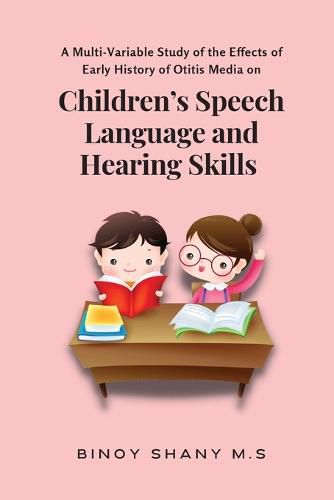Readings Newsletter
Become a Readings Member to make your shopping experience even easier.
Sign in or sign up for free!
You’re not far away from qualifying for FREE standard shipping within Australia
You’ve qualified for FREE standard shipping within Australia
The cart is loading…






This title is printed to order. This book may have been self-published. If so, we cannot guarantee the quality of the content. In the main most books will have gone through the editing process however some may not. We therefore suggest that you be aware of this before ordering this book. If in doubt check either the author or publisher’s details as we are unable to accept any returns unless they are faulty. Please contact us if you have any questions.
Hearing is critical to speech and language development, communication, and learning. Hearing loss, or deafness, is the partial or total inability to hear sound in one or both ears. In India, the definition of hearing handicap was determined by the Rehabilitation Council of India Act of 1992, which defines a hearing handicap as, deafness with a hearing impairment of 70 decibels and above in the better ear or total loss of hearing in both ears. According to American Speech and Hearing Association (ASHA, 1981), the term hearing impairment is used to mean a deviation or change for the worse in either auditory structure or auditory function, usually outside the range of normal. The hearing mechanism is based on the transduction of the acoustic stimulus into neural inputs through the inner ear, the transmission of these inputs through a neural network all the way to the cerebral cortex and the perception registers with the later cognitive elaboration of the acoustic signal. The early history of fluctuating conductive hearing loss disturbs the hearing mechanism which leads to a significant reduction in hearing sensitivity. The reduced auditory input, if in the early years of life when the auditory neural system is still maturing, may adversely influence the structural as well as functional development of the system. Children with listening difficulties due to hearing loss or auditory processing problems continue to be an under-identified and underserved population.
$9.00 standard shipping within Australia
FREE standard shipping within Australia for orders over $100.00
Express & International shipping calculated at checkout
This title is printed to order. This book may have been self-published. If so, we cannot guarantee the quality of the content. In the main most books will have gone through the editing process however some may not. We therefore suggest that you be aware of this before ordering this book. If in doubt check either the author or publisher’s details as we are unable to accept any returns unless they are faulty. Please contact us if you have any questions.
Hearing is critical to speech and language development, communication, and learning. Hearing loss, or deafness, is the partial or total inability to hear sound in one or both ears. In India, the definition of hearing handicap was determined by the Rehabilitation Council of India Act of 1992, which defines a hearing handicap as, deafness with a hearing impairment of 70 decibels and above in the better ear or total loss of hearing in both ears. According to American Speech and Hearing Association (ASHA, 1981), the term hearing impairment is used to mean a deviation or change for the worse in either auditory structure or auditory function, usually outside the range of normal. The hearing mechanism is based on the transduction of the acoustic stimulus into neural inputs through the inner ear, the transmission of these inputs through a neural network all the way to the cerebral cortex and the perception registers with the later cognitive elaboration of the acoustic signal. The early history of fluctuating conductive hearing loss disturbs the hearing mechanism which leads to a significant reduction in hearing sensitivity. The reduced auditory input, if in the early years of life when the auditory neural system is still maturing, may adversely influence the structural as well as functional development of the system. Children with listening difficulties due to hearing loss or auditory processing problems continue to be an under-identified and underserved population.